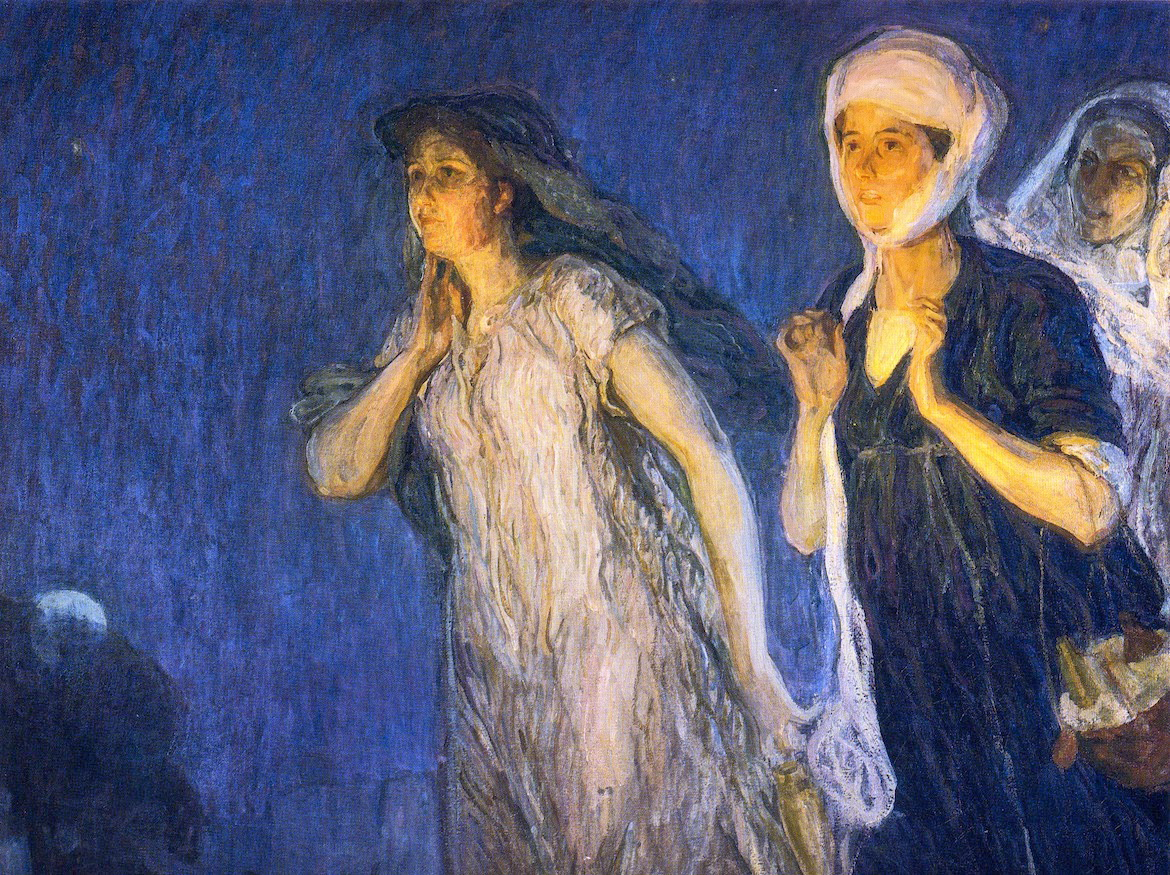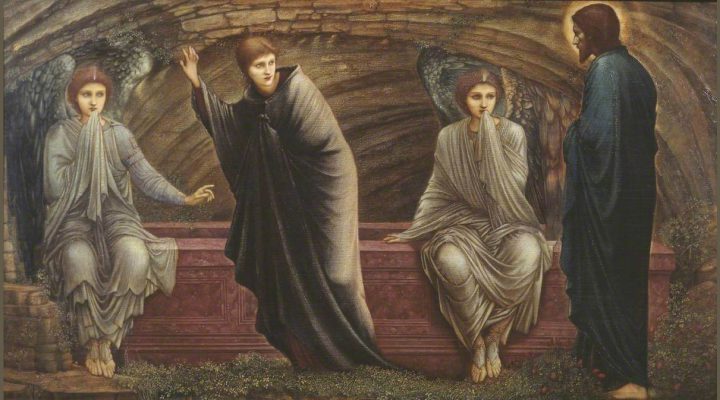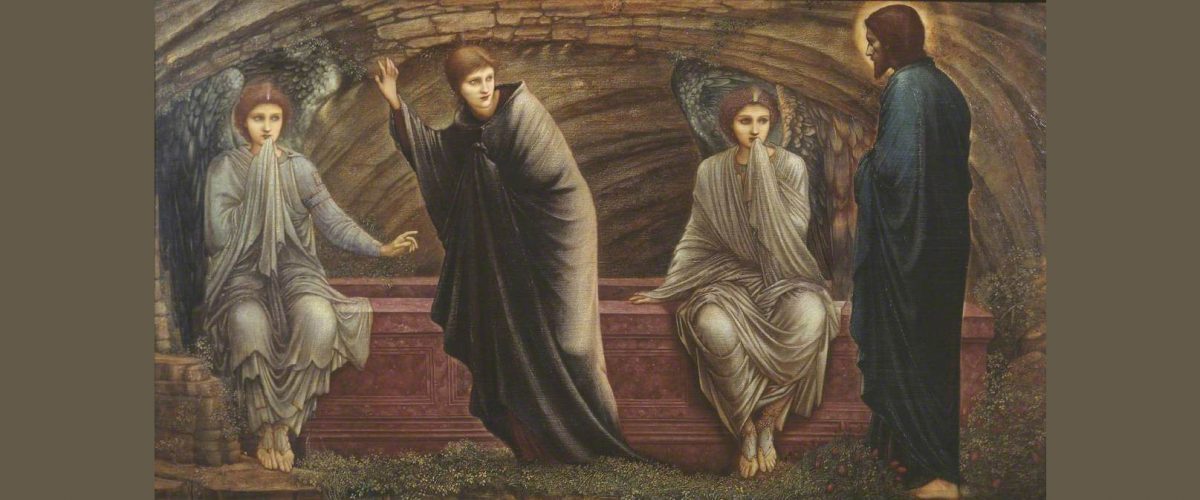Baptists have made plenty of mistakes in how we regard women. Women have just begun to take a full stride as pastors in many of our networks and denominations, while the Southern Baptists still disallow women to serve as pastors.
As I discussed previously, we have made many mistakes in how we see Mary the mother of Jesus, which influences how we see all women and therefore women in ministry. Jesus shows us through the symbol of the incarnation what embodied love can look like as God comes to be with us through the body of a woman.
“Baptists may also be guilty of giving little thought to the role of Mary Magdalene.”
Baptists may also be guilty of giving little thought to the role of Mary Magdalene. In our Lent and Easter observances she is relegated to a bit part when she is one of the main characters, the narrator, even, of the story of Easter.
Jesus appears to her. Not to Peter or Mary, his mother, but to Mary Magdalene.
Mary, the Magdalene, is chosen.
Too many Marys
The Magdalene is often called a sex worker (she’s not) to show us lowly sinners (we’re not) how wonderful it is that God could use even her to share the good news of the empty tomb. Thus, taking her status down even further, our eyes and ears are meant to skip over the fact that a woman was chosen to see the risen Jesus at the tomb and commissioned to share the Easter message.
The problem is there are just too many Marys. Mary the mother of Jesus and Mary Magdalene share the same first name, a common name. There are other Marys we are offered familial descriptors to distinguish. We know Mary and Martha of Bethany, the sisters mentioned in all four Gospels, and in John’s Gospel they have a brother, Lazurus. Also in John’s Gospel, Mary of Bethany anoints Jesus’ feet while in other Gospels the woman who anoints Jesus’ feet is unnamed and is called a sinner. Hence some have confused, conflated, Mary of Bethany with Mary Magdalene and the unnamed woman who is called a sinner, all somehow becoming one person who is a reformed prostitute named Mary Magdalene in the minds of preachers and Sunday school teachers.
Not a hard mistake to make, as it is very confusing, and a handy mistake at that as it props up the patriarchy for centuries.
What we only know for certain about this Mary called the Magdalene is that she was named first in a group of women who provided for Jesus’ ministry out of her own means and was grateful to Jesus because he had cured her of demonic procession, which is mentioned only in Luke’s Gospel. Magdalene, long thought to be a place name, no longer is agreed upon. Some have posited that it is a title or a nickname, Mary the Tower or Mary the Great.

“Three Marys,” by Henry Ossawa Tanner. From the left, Mary Magdalene, Mary the mother of James, and Salome approaching Jesus’ tomb. Fisk University Art Galleries, Nashville, Tennessee. Wikimedia Commons.
Mary and the resurrection
Mary the Magdalene has a huge part to play in the Gospel of John. Here is where we see her rise to prominence, having only been mentioned briefly in the synoptic Gospels.
Having remained at the tomb to be near to the body, Mary encounters a man she mistakes for the gardener but upon hearing her name she recognizes her teacher, realizing death has not held him in the tomb. Jesus is somehow before her.
Jesus implores Mary to go and tell the disciples the good news of what she has seen and heard. She becomes the apostle to the apostles as she goes to tell the good news, that their friend and teacher is resurrected. She reminds us of the evangelist Samaritan woman, who brings the good news of living water to her village. Mary brings this same life-giving news to the disciples.
“Another woman, teaching us, bringing us the good news of Jesus.”
When all hope was lost, new life springs forth.
Another woman, teaching us, bringing us the good news of Jesus. Birthing word of a new movement.
The Magdalene is mother to our faith, embodied good news. Body and blood pumping, perhaps rushing with excitement to share what is to become a new awareness of the power of life over death. She speaks, “the I Am is freed from death!” The glorification of the Cross is now revealed in what she has witnessed firsthand. A new life is dawning for us all.
Body and blood
In the Gospel of John, the eucharist is referred to early in chapter six as Jesus speaks of his flesh and blood to foreshadow what is to come. He teaches us this new life allows us to be one with God. Our embodied selves are alive with an enduring love, an abiding love, and we are also freed. In freedom we can proclaim at the table of love:
This is our body
This is our blood
This is our table
This is our way of love,
We are one with each other
We are one with God
We are ONE
The Easter message that we are one, we are body and blood related to Jesus comes to us from the testimony of none other than Mary Magdalene.

“Practice Resurrection,” Julia Goldie Day
Our spiritual mother
The Magdalene reminds this Baptist woman that she is my spiritual mother, the mother of the Christian faith, when I am tempted to forget the power of a woman’s words. These spiritual roots tracing back to Mary Magdalene comfort me as I yearn for freedom and voice for myself and my sisters and others with less power.
During this BWIM Month of Advocacy, we must remind ourselves of our Baptist principles and deep roots that offer us healing with our relationship with women in the Scriptures, with the women in our own lives, and our own female-created-in-God’s-own-image selves.
Much harm has been done in the name of Jesus. It is time to revisit how we are related to the Magdalene and to each other with the healing waters of baptism, practicing resurrection. We are born again together in love, we lift the cup and eat the bread as incarnate people, as one flesh.
Legend says the Magdalene visited the emperor to proclaim the resurrection holding an egg aloft in her hand to represent new life saying, “Christ is risen.” The emperor says that is no more true than that egg there can turn red. Then the egg in her hand turns red to indicate the truth in her words.
Hence the Easter response, “Christ is risen indeed.”
May we join with our spiritual mother Magdalene, body and blood related, in freely proclaiming the living body and blood of Jesus Christ. We are alive. We practice resurrection. Hallelujah. Amen.

Julia Goldie Day
Julia Goldie Day is an ordained minister within the Cooperative Baptist Fellowship and lives in Memphis, Tenn. She is a painter and proud mother to Jasper, Barak and Jillian. Learn more at her website or follow her on socials @JuliaGoldieDay.
Related articles:
There’s something odd about this Mary, did you know?
After 30 years, the NRSV gets an update: Here’s what that means
I knew the truth about women in the Bible, and I stayed silent | Opinion by Beth Allison Barr


